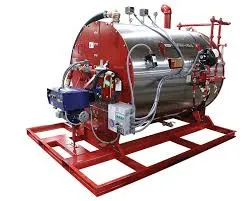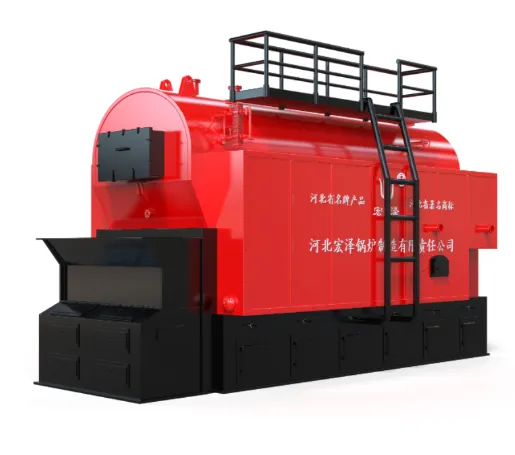
Jan . 21, 2025 04:26 Back to list
Biomass fired steam boiler
Replacing a steam boiler is a significant decision for any business or homeowner, demanding a blend of professional guidance and real-world experience. Steam boilers are the heart of many heating systems, providing the necessary heat for various industrial processes and residential heating. Over time, boilers can become inefficient or obsolete, necessitating a replacement. Here is a comprehensive exploration of the steam boiler replacement process, focusing on expertise, experience, and reliability.
Once the new boiler is selected, the installation phase is critical. This complex process should only be undertaken by certified professionals to ensure compliance with local codes and safety standards. A proper installation not only ensures peak performance but also extends the lifespan of the boiler. Improper setup can lead to inefficiencies and potential safety hazards, undermining the investment in a new system. Post-Installation Maintenance and Monitoring Replacing a steam boiler represents a substantial investment. Protecting this investment through regular maintenance is essential. Scheduled inspections and tune-ups performed by qualified technicians help maintain efficiency and prevent untimely failures. Modern boilers often feature advanced monitoring systems that provide real-time data on performance, allowing for proactive maintenance approaches. Environmental and Economic Benefits A new, energy-efficient steam boiler doesn't just cut costs; it also reduces carbon footprints. This is increasingly important as businesses and individuals strive to meet environmental goals and regulations. Lower energy consumption means reduced greenhouse gas emissions, benefiting both the environment and your bottom line. In many regions, investing in energy-efficient appliances can also provide access to government rebates or incentives, further offsetting initial costs. Conclusion The replacement of a steam boiler is a complex but rewarding process. It requires careful consideration of various factors, from the initial assessment and selection to professional installation and ongoing maintenance. By prioritizing expertise and reliability, businesses and homeowners can enjoy enhanced performance and efficiency, alongside the peace of mind that comes from a safe and sustainable heating solution. With the right guidance and investment, replacing a steam boiler can lead to significant long-term economic and environmental benefits.


Once the new boiler is selected, the installation phase is critical. This complex process should only be undertaken by certified professionals to ensure compliance with local codes and safety standards. A proper installation not only ensures peak performance but also extends the lifespan of the boiler. Improper setup can lead to inefficiencies and potential safety hazards, undermining the investment in a new system. Post-Installation Maintenance and Monitoring Replacing a steam boiler represents a substantial investment. Protecting this investment through regular maintenance is essential. Scheduled inspections and tune-ups performed by qualified technicians help maintain efficiency and prevent untimely failures. Modern boilers often feature advanced monitoring systems that provide real-time data on performance, allowing for proactive maintenance approaches. Environmental and Economic Benefits A new, energy-efficient steam boiler doesn't just cut costs; it also reduces carbon footprints. This is increasingly important as businesses and individuals strive to meet environmental goals and regulations. Lower energy consumption means reduced greenhouse gas emissions, benefiting both the environment and your bottom line. In many regions, investing in energy-efficient appliances can also provide access to government rebates or incentives, further offsetting initial costs. Conclusion The replacement of a steam boiler is a complex but rewarding process. It requires careful consideration of various factors, from the initial assessment and selection to professional installation and ongoing maintenance. By prioritizing expertise and reliability, businesses and homeowners can enjoy enhanced performance and efficiency, alongside the peace of mind that comes from a safe and sustainable heating solution. With the right guidance and investment, replacing a steam boiler can lead to significant long-term economic and environmental benefits.
Share
Latest News
-
Oil Fired Hot Water Boilers Sale - High Efficiency & Affordable
NewsJul.31,2025
-
High-Efficiency Commercial Oil Fired Steam Boiler for Industry
NewsJul.30,2025
-
High-Efficiency Biomass Fired Thermal Oil Boiler Solutions
NewsJul.30,2025
-
High Efficiency Gas Fired Thermal Oil Boiler for Industrial Heating
NewsJul.29,2025
-
High-Efficiency Gas Fired Hot Water Boiler for Sale – Reliable & Affordable
NewsJul.29,2025
-
High Efficiency Biomass Fired Hot Water Boiler for Industrial and Commercial Use
NewsJul.29,2025
Related PRODUCTS
Copyright © 2025 HEBEI HONGZE BOILER MANUFACTURING CO., LTD. All Rights Reserved. Sitemap | Privacy Policy






















